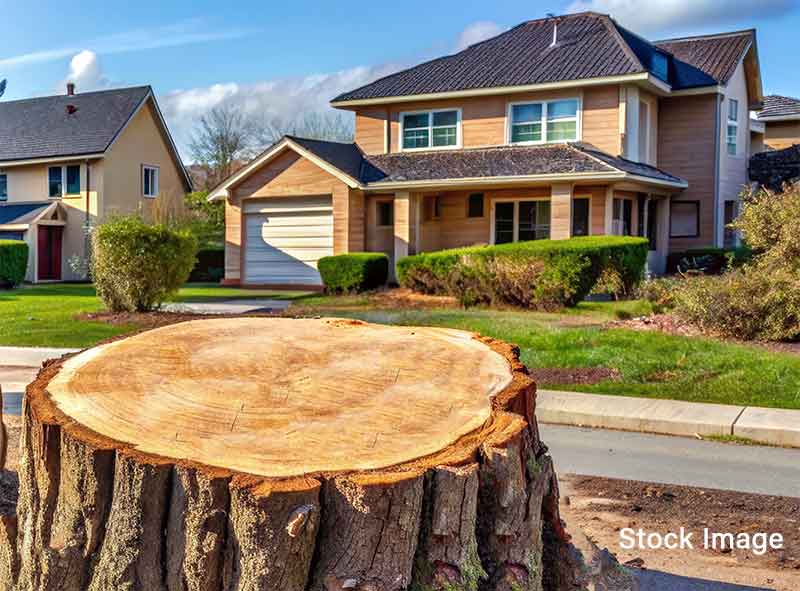If Valuable, Working Trees Fall in our Community Urban Forest Does Anybody Hear?
“The benefits people obtain from [trees in their community include]
shading and cooling,
carbon storage,
storm water management,
clean air, mental well-being,
food production, and pollination...
Private land “supports the majority of the tree canopy, new buildings with larger footprints often displace trees.”
“What about the trees in B.C. communities as density increases?”, Vancouver sun, Dec 14, 2023
“While we will never stop appreciating nature for its own sake, we can also start to see our ecosystems as the source of valuable services to our community.
Many of the benefits that our ecosystems provide would be very expensive or impossible to replicate.
As we develop our community, it’s important to disrupt the natural functioning o our ecosystems as little as possible.
This doesn’t mean that we can never interfere with nature, but we must do it wisely and sensitively….
The range in estimated values represents the diversity of studies that are used.. forests: $653 million–$1.8 billion… waterways: $88–$574 million… foreshore: $549 million… parks: $16 million…carbon storage: $228 million.”
District of West Vancouver, “West Vancouver’s Natural Assets”
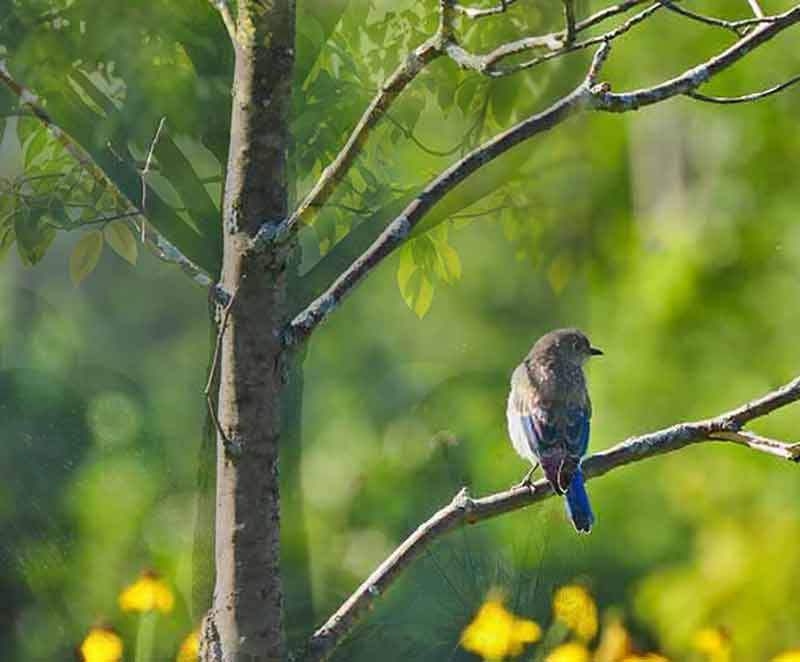
“Working Trees provide wildlife habitat and contribute to the social and economic well-being of landowners and community residents”
U.S. Forest service
So Why is West Vancouver losing tree canopy?
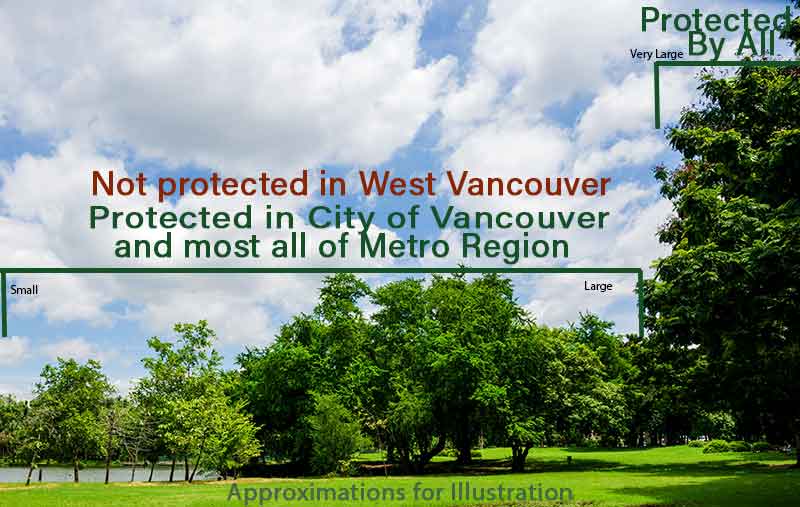
The District of West Vancouver (and North Vancouver) only protect healthy, non-hazardous trees in the “very large tree” category of trees that are 75cm or greater (with some exceptions for Arbutus, Garry oak, Pacific yew, Pacific dogwood, yellow cedar, and shore pine. See the Tree Bylaw here District of West Vancouver,
Note: ALL healthy, non-hazardous RIPARIAN AREA TREES, SHRUBS, AND GRASSES ARE PROTECTED (that is 15m FROM TOP OF CREEK BANKS and all watercourses in West Vancouver) under the Riparian Area Protection Act, which is delegated to municipalities for enforcement. This is a post about riparian area trees.
Unsurprisingly:
- The City of Vancouver increased its tree canopy by about 4%-5% in recent years.
- yet
- Conversely, West Vancouver lost 2% tree canopy between 2018 and 2021 (Urban Forest Management Plan, p.36). Some speculate that West Vancouver has probably lost at least another 2% between 2021 and today. Ambleside is down to a tree canopy of 19%.
So What’s the Big Deal?
Can’t we just plant a bunch of trees some time later if things get really bad?
No. Experts agree tree replanting is very uncertain.
It may become impossible given e.g. soil conditions and draught for trees to grow, and even if possible it takes years or decades for trees to grow to maturity as fully working trees.
“Many of the benefits that our [West Vancouver] ecosystems provide would be very expensive or impossible to replicate“
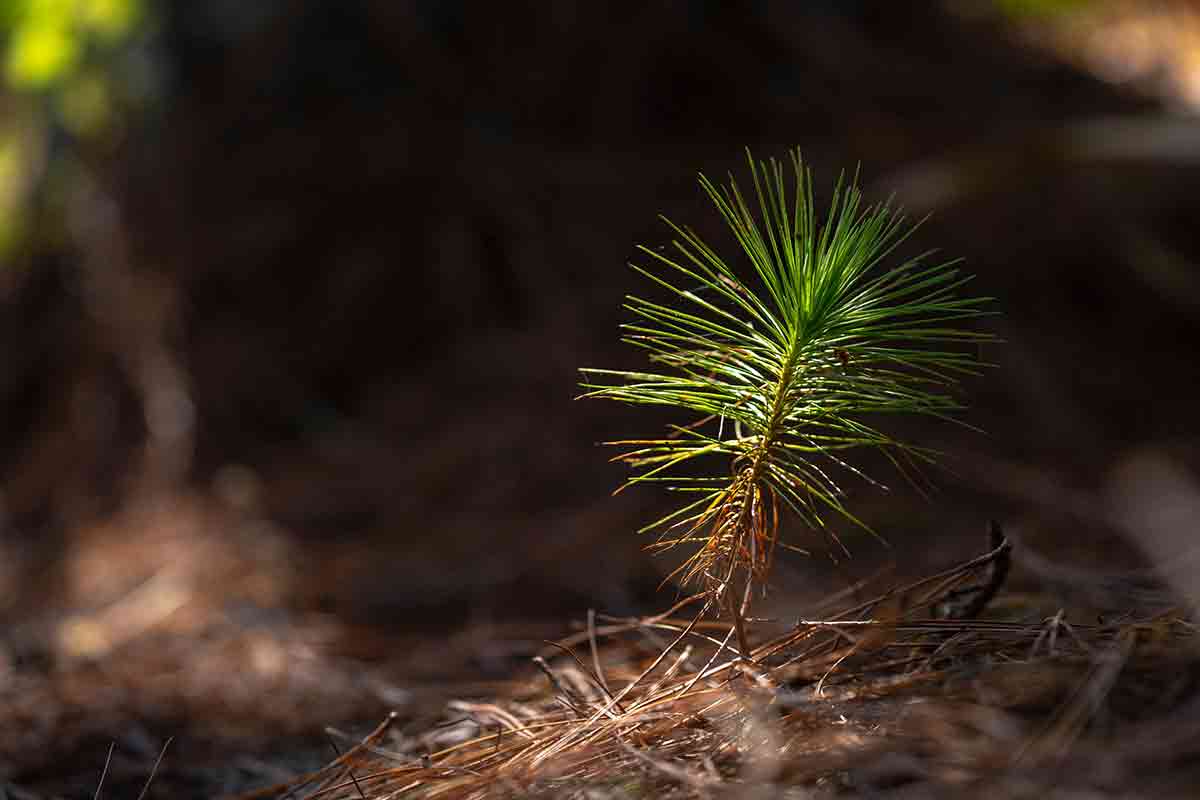
Here also is a post linking to a video with tree experts both academic and in the field on the difficulties of successful replanting. A U of T Forestry Prof asserts that we must first and foremost protect our (healthy, non-hazardous) mature trees.
But is there any actual data that cutting down healthy, non-hazardous trees causes any problems?
Yes. Serious data and serious problems.
- The Coroner’s Report on the (619) deaths that occurred in the 2021 Heat Dome in British Columbia in which (619) people died, 90% of whom were over age 60;
- and the known link to high heat in heat domes being due to low tree canopies.
- and
- and the known link to high heat in heat domes being due to low tree canopies.
- More data: this is an example from Woodland’s Trust on flooding and the atmospheric rivers that we are experiencing:
- ” Trees and woods play a vital role in reducing flooding by slowing down the flow of rainwater, absorbing rainwater and reducing erosion. And this post on the importance of healthy tree roots
- These are just two examples of the data available for the immediate ways that our working trees in West Vancouver protect us.
What can be done about it?
Besides raising awareness with property owners that it is to their and the WV community benefit (both well-being and financial) to protect all healthy trees on private property and boulevard area, including for example, watering them..
Development and climate change is happening fast and we are in unchartered territory.
Mayors and Councils are dealing with an enormous number of issues, many novel, and hear regularly from a range of external, very loud interest groups who are often environmentally unaware or unconcerned.
Our stakeholder community voice needs to be heard above them.
This is a West Vancouver District link describing how to communicate with Mayor and Council and have your voice heard.
